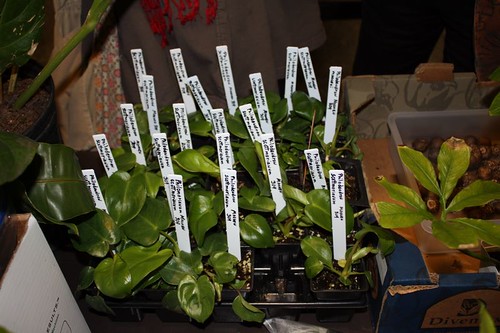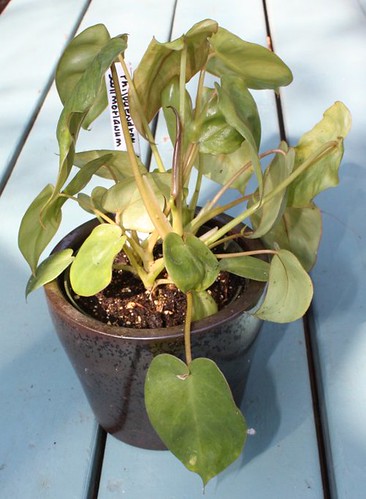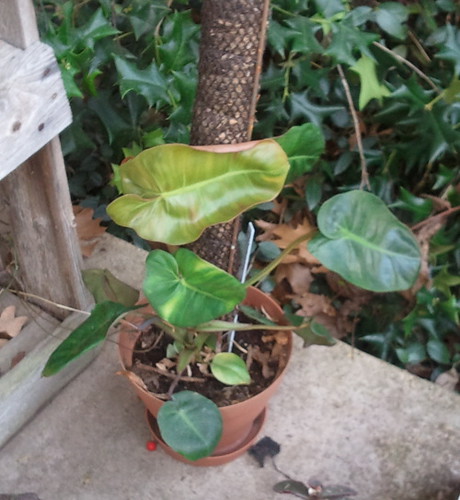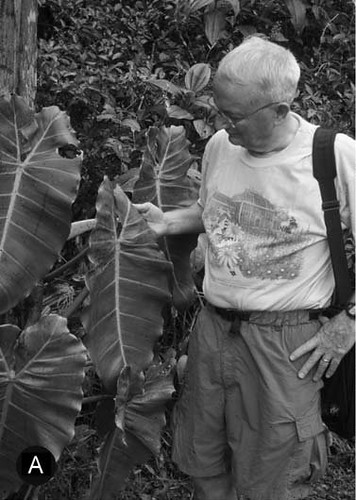The guest speaker for the IAS annual show and sale this past year was Dr. Scott Mori, of the New York Botanic Garden. I wasn't able to go to the show myself, but I did get to hear a little about him. A couple of years ago a newly described species found in the tropical South American country of French Guiana was named in Scott Mori's honor. It was discovered by Joep Moonen and published by Joep and Dr. Thomas Croat. Joep also collected seeds from this plant and sent them to Dr. Croat at the Missouri Botanical Gardens. These seeds were grown under Dr. Croat's care and I was fortunate enough to get one of the small plants at our MidAmerica chapter meeting back in October. This plant was only recently discovered in the tropics and is not yet in cultivation, other than these few seedlings that were distributed to members at our meeting.
 |
| Tray of Philodendron scottmorianum seedlings at the MidAmerica chapter meeting |
Now that is has had a couple more months to grow and mature, the leaves are starting to take on a different shape. The plant now looks like this:
 |
| Philodendron scottmorianum |
Warren Payne, one of my friends from the meeting sent me a picture recently of how his plant is looking now. Warren's plant is a little more mature than mine and has begun climbing a totem he set up for it.
 |
| Philodendron scottmorianum - photo courtesy of Warren Payne |
The article which describes the species contains the following picture of Scott Mori with a specimen of the plant.
 |
| Dr. Scott Mori with the plant named after him, Philodendron scottmorianum (photo taken at Emerald Jungle Village, French Guiana, courtesy of Dr. Thomas Croat) |




Glad your plant has done so well. Cool to have a plant from French Guiana!
ReplyDeleteI don’t know if you will see this, but I was wondering what this plant looks like now? It’s been nine years so it would be interesting to see what it looks like in maturity?
ReplyDelete